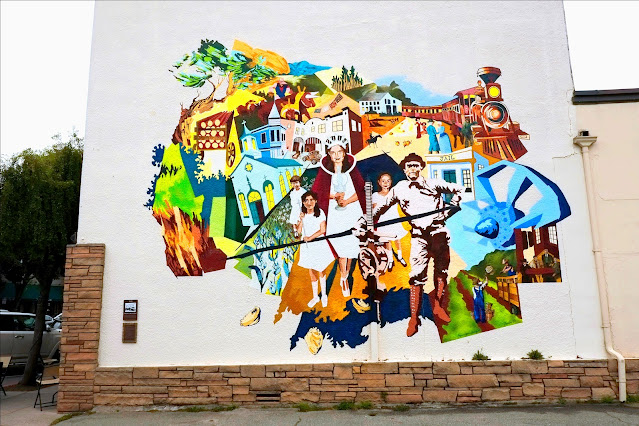Wednesday, March 30, 2022
Play Date: Fuji X-Pro1
Sunday, March 27, 2022
Cold Turkey - Return To The Fuji
After the luxury of tight compositions made possibly by the zoom-lenses P7700, I was struggling to compose in the vast expanse forced by the limitations of the prime 17mm lens. I was drawn to the two distinct areas of lightness against the relative early morning darkness. But when your hungry for new subjects, it doesn't take much.
Somebody had the imagination to see a monster's face in this growth on the side of this tree.
This image was included because it took me a full minute to realized these were three white-bearded gnomes looking skyward.
Getting back to the whole manual focus ethos will be harder than I thought.
Sunday, March 13, 2022
More Time With The Nikon P7700
One adjustment I needed to make was in the framing. The P7700 doesn't have the 1.5x aspect ratio of the Fuji. Instead, it uses the 4/3 proportions of the Micro Four Thirds cameras. To the bad, it's neither 8 X 10 or 8 X 12, two formats I am more familiar with. Oh well, be understanding when you notice that the images are cropped to the more traditional 8 X 10 print. (I checked the specifications on the Fuji X10, and it too has a Four Thirds aspect ratio).
This motorcycle engine was lit by sunlight bounding off of a light-colored building behind me. This gave the housing a broad, almost glowing highlight with plenty of shadow detail. I converted the image to black and white using the the Remove Color function, a quick way to get that monochrome effect. It hadn't occurred to me that the engine was inherently monochromatic, but if you look at the thumbnail at the right, there wasn't that much color to begin with. The black and white conversion brings out the highlights better than the original.
Believe it or not, I've been trying to make this image for years. If you look at the thumbnail at the right (side view), you can see that the photo was made while looking up, and into, the flower itself. Unlike the Fuji cameras I currently own, the Nikon's screen is fully reticulated, making this upshot easy to accomplish.
Thursday, March 10, 2022
My Nikon P7700 Revisited
 |
| Nikon p7000 |
 |
| Nikon P7700 |
Monday, March 7, 2022
Red Bluff 2022
I was playing with using a small flash to light my foreground subject while attempting to maintain the rich colors of the twilight sky. The Nikon P7000's quirkiness is starting to get to me. I am seriously considering getting a higher-end point and shoot for times like this when I photograph in hostile (camera-wise) environments. I'm feeling that life's too short to put up with equipment that just makes you angry.




























